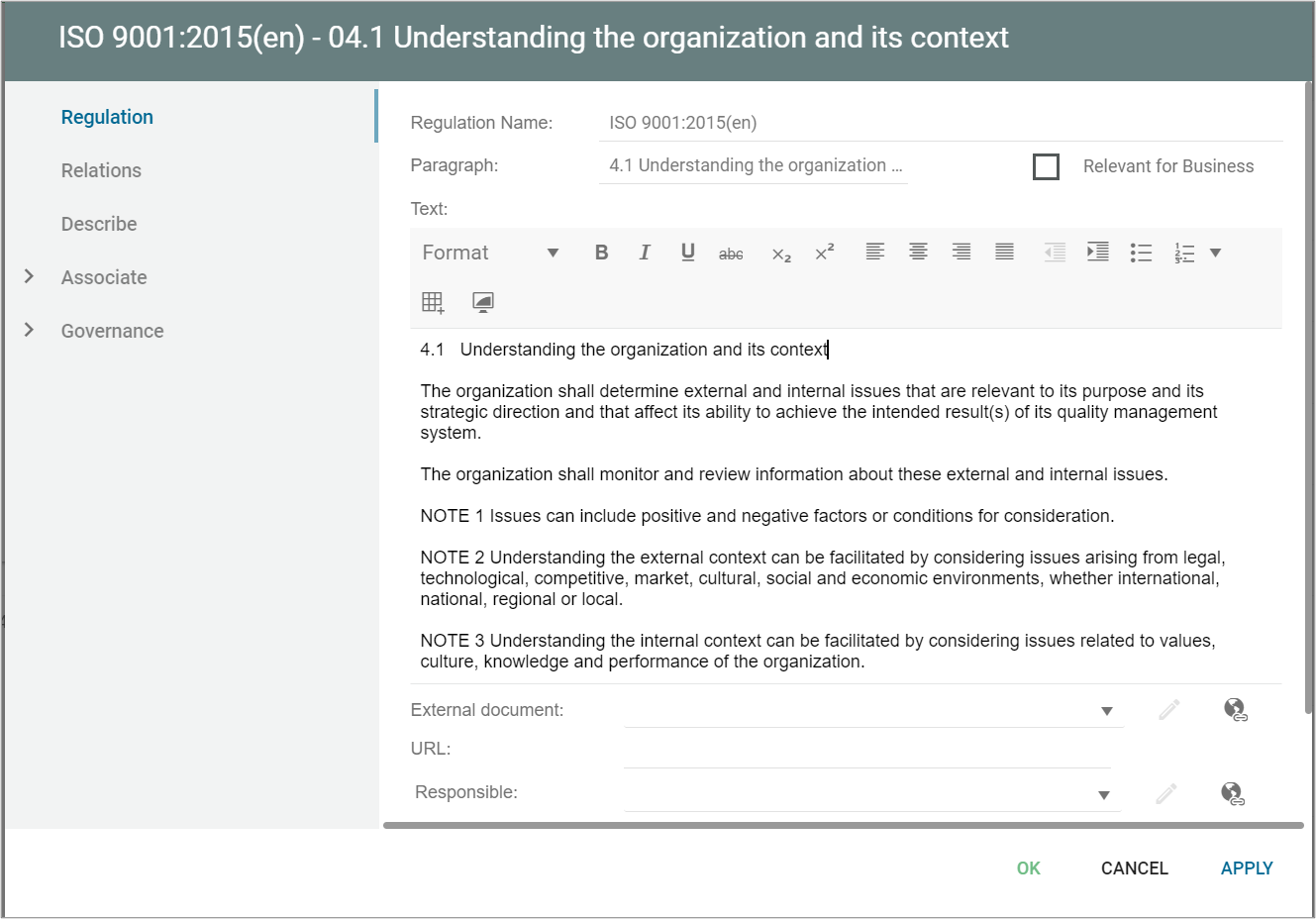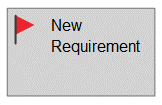In a highlevel WorkModel the ProjectActivites may break down to a new WorkModel, but at the lowest level ProjectActivities may break down to low level ProjectActivites each producing a single deliverable (Result).
ProjectActivities are also used in CPMDiagram to describe the tasks and their mutual time constraints. This way a critical path through a given project can be discovered and a detailed plan of the relationships between dates, activities and resources can be made.
Since the nature of a ProjectActivity appearing on a work model is of a generic descriptive kind – especially on the higher levels of the work model hierarchy – it will be logical to break such an activity down to a CPMDiagram. The ProjectActivities on the CPMDiagram will then describe when and by whom the work is to be carried out in the project. The activities on a CPMDiagram satisfies precisely the requirements the project manager has while planning and monitoring the project. Whereas the activities on the work model are made with the purpose of guiding and controlling the organisation through standardized procedures and quality management strategies.
ProjectActivity properties
The ProjectActivity tab
| Property | Metamodel name | Description |
| Short Description | ShortDescription | Short verbal description |
| Purpose | Purpose | Short clear description of the purpose of this activity in the project |
| Prerequisites | Prerequisites | Descriptions of deliverables and conditions for this activity to start |
| Responsible | HasResponsible | Link to the responsible for this activity Links to: InterestGroup, OrganizationUnit, Person, Position, Resource, Role. |
| Involved | Employs | The resources used by this activity Links to: InterestGroup, OrganizationUnit, Person, Position, Resource, Role. |
The Dates tab
| Property | Metamodel name | Description |
| Earliest start | EarliestStart | In this field the date for the earliest start of this Activity is entered. The date can be entered manually or the field can be filled with the use of the menu option Calculate earliest or Calculate both directions on a CPMDiagram. |
| Earliest finish | EarliestFinish | In this field the date for the earliest finish of this Activity is entered. The date can be entered manually or the field can be filled with the use of the menu option Calculate earliest or on Calculate both directions a CPMDiagram. |
| Latest start | LatestStart | In this field the date for the latest start of this Activity is entered. The date can be entered manually or the field can be filled with the use of the menu option Calculate latest or Calculate earliest on a CPMDiagram. |
| Latest finish | LatestFinish | In this field the date for the latest finish for this Activity is entered. The date can be entered manually or the field can be filled with the use of the menu option Calculate latest or Calculate earliest on a CPMDiagram. |
| Optimistic | OptimisticDuration | This field is used to give a very optimistic estimation of the duration of the activity. The value of the field should mark the 1 percentile of the propability distribution. This means that there should be less than 1 % propability that the duration will be shorter than the value of this field.
The shortest possible time period used to perform this activity. |
| Total slack | TotalSlack | Gives a slack value based on the assumption, that all preceeding activities are carried out as early as possible, and all succeeding activities are carried out as late as possible. The field can be filled with the use of the menu point Calculate slack on a CPMDiagram. |
| Group | ||
| Group | ||
| Realistic | RealisticDuration | The most likely time period used to perform this activity. |
| Free slack | FreeSlack | Gives a slack value based on the assumption, that all preceeding and succeeding activities are carried out as early as possible. The field can be filled with the use of the menu option Calculate slack on a CPMDiagram. |
| Pessimistic | PessimisticDuration | This field is used to give a very pessimistic estimation of the duration of this activity. The value of the field should mark the 99 percentile of the propability distribution. This means that there should be less than 1 % propability that the duration will be longer than the value of this field. The longest possible time period used to perform this activity. |
| Independent slack | IndependentSlack | Gives a slack value based on the assumption, that all preceeding activities are carried out as late as possible, and all succeeding activities are carried out as early as possible. The field can be filled with the use of the menu option Calculate slack on a CPMDiagram. |
| Start Date | ActualStartDate | The actual starting date of the activity |
| End Date | ActualEndDate | The actual ending date of the activity |
| Group | ||
| Number of spent time units | ActualSpentTimeUnits | In this field the actual number of spent persondays for the activity is entered. If this field contains a value the value is used instead of the planned estimation parameters, when a total estimation including the activity is made. In this way an estimation process that includes allready finished activities will use the actual numbers instead of the planned numbers. |
| Time unit for Duration and Slack | TimeUnit | The unit for time measurement for this Activity. Choices are: Seconds Minutes Hours Days Weeks Months Years |
The Breaks Down To tab
| Property | Metamodel name | Description |
| Breaks Down To | BreaksDownTo | Links to entities specifying this project activity Links to: CPMDiagram, ProjectActivity, WorkBreakdownStructure, WorkModel. |
| Result | Produces | Link to deliverable for a low-level ProjectActivity Links to: Result. |
The Relations tab
| Property | Metamodel name | Description |
| Relevant generic processes | UsesGenericProcess | Links to: Activity, WorkFlowDiagram. |
| Relevant Documents | HasRelevantDocument | Links to: ConfigurationDiagram, ExternalDocument. |
| Belongs to Organization | BelongsToOrganization | Links to: OrganizationDiagram, OrganizationUnit. |
The Cost tab
| Property | Metamodel name | Description |
| Group | ||
| Multiplier | PlannedMultiplier | Planned estimation parameters. These parameters are used to define and store the cost estimation model an organization is using in order to estimate the size and costs for a specific project. Using the three fields multiplier, exponent and projectsize the definition of an exponential function relating project size to effort can be defined. Consequently a total estimated effort for a hierarchy of workmodels and activities can be calculated. This is done from the workmodel menu.
Multiplier. In this field the planned multiplier for the activity can be entered. The multiplier will be calculated from the key figures for the organisation, based on the organizations experience with activities like the current, the skill level of the project group, the use of tools etc. |
| Exponent | PlannedExponent | In this field the exponent for the function can be entered. If the exponent has the value one, the multiplier will denote the slope of the curve of the function. |
| Size | PlannedProjectSize | In this field the project size can be entered. The project size can be measured in all kinds of units such as function points. |
| Group | ||
| Injections | PlannedInjections | In this multiline field the planned income to the project during the current activity can be entered. The purpose of doing this is to be able to calculate the cash flow of the project. |
| Withdrawals | PlannedWithdrawels | In this multiline field the planned cost for the activity can be entered |
| Group | ||
| Multiplier | ActualMultiplier | In this field the actual multiplier for the activity is entered. |
| Exponent | ActualExponent | In this field the actual value of the exponent for the activity is entered. |
| Size | ActualProjectSize | In this field the actual project size is entered. |
| Group | ||
| Injections | ActualInjections | In this multiline field the actual cost to the project during this activity is entered |
| Withdrawals | ActualWithdrawels | In this field the actual cost from the project during this activity is entered. |
The Techniques tab
| Property | Metamodel name | Description |
| Use technique | UseTechnique | Links to technique instructions Links to: Document, ExternalDocument, Technique. |
| Tool | Tool | Link to tool-specifications for this result Links to: ExternalDocument, InformationSystem. |
| Good Practice examples | GoodPractice | Link to files showing good examples Links to: All templates. |
The Show tab
| Property | Metamodel name | Description |
| Show on WorkModel | Show | Set diagram view for this ProjectActivity Choices are: |
The Action tab
| Property | Metamodel name | Description |
| Macro | Macro | This field is used to create a command language program that can be executed when the user double clicks on the symbol. |
| Execute on Double-click | ExecuteOnDoubleClick | Macro is always executed when double clicking on the symbol. Initial value is off. |


